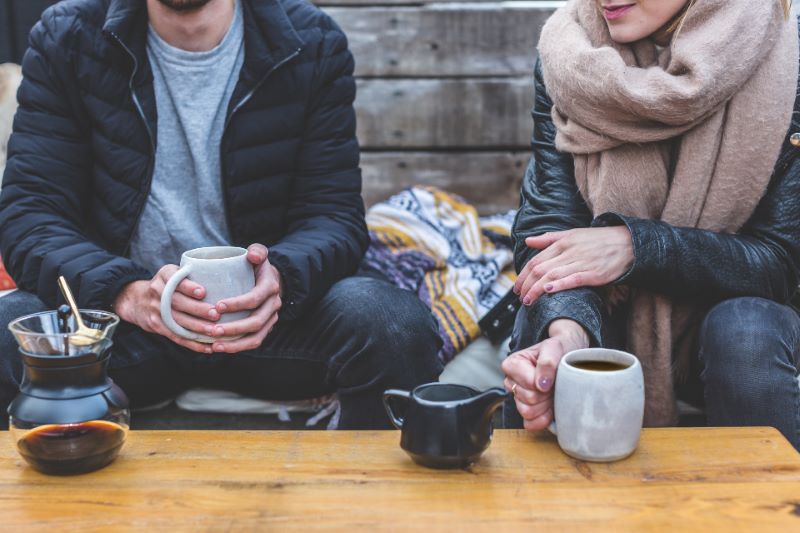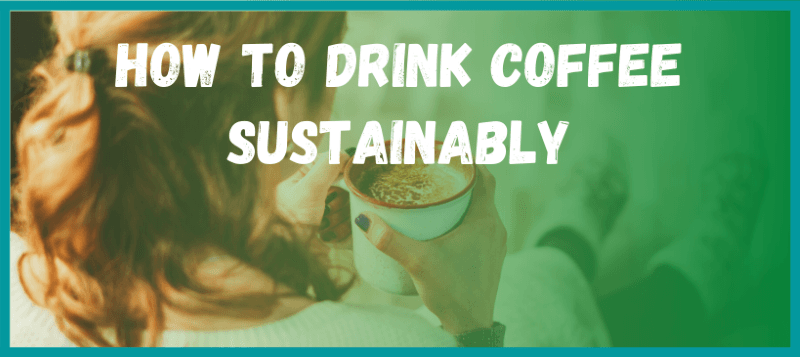The Green Way to Drink Coffee (Sustainably)
Did you know across the globe, people drink over 2 billion cups of coffee every day?(1)
If that doesn’t shock you, this will – the coffee grounds left from making those 2 billion cups of coffee contribute 6 million tons of waste to landfills every year. At landfill, these waste coffee grounds contribute to global warming by emitting methane – a greenhouse gas that’s over 30 times stronger than carbon dioxide. (2)
But that’s only waste from simply drinking coffee. The waste from global coffee production is even more significant – over 23 million tons of waste every year. (3)
Clearly, we can’t keep enjoying coffee at the expense of the earth. To help, here are some greener ways to enjoy your coffee guilt-free.
“Green Coffee” … what does that mean?
Green coffee could mean unroasted coffee beans. They are rich in chlorogenic acid, which improves blood sugar levels, blood pressure, and also aids weight loss. (4)
However, in this article, the green coffee we’re referring to is coffee that’s sustainably grown and processed. Such coffee has a lower impact on the environment, which means you can enjoy it with zero guilt. Here are some of our favorite types of green coffee.
Organic
The producers of organic coffeegrow and process it without using synthetic substances, including ones that might harm you or the environment. Some of these synthetic substances includefertilizer, pesticides, and herbicides.
Fair Trade
The fair-trade arrangement helps coffee farmers secure better deals for the coffee beans they produce. Such arrangements are essential because most coffee producers are third-world farmers that are typically taken advantage of by other members of the supply chain.
By choosing to buy only fair-trade coffee, you are supporting the fair treatment of these coffee producers and ensuring they enjoy sustainable and profitable trading.
Shade-Grown
Shade-grown coffee is simply coffee that’s grown under a natural canopy of trees or other shade. It has less of an environmental impact because instead of using pesticides, natural predators, such as lizards and birds, eliminate bugs and other pests. The presence of the canopy also protects the soil against erosion and leaching naturally. (5)
Kosher
Kosher is a Jewish standard that dictates what’s fit for eating. One of the things not fit for eating is coffee that containschemicals or flavorings. That’s why traditional kosher coffee is strictly made with water and java beans.
If you like your coffee with cream, the cream has to come from a clean and healthy kosher cow.
Bio-Diverse
Bio-diverse coffee is grown in an environment with a thriving plant and animal ecosystem. According to studies, (6) the presence of bees, birds, bats, and similar life forms where coffee is grown aid pollination and pest control, leading to better quantity and quality harvests.

Bonus Considerations
Now that you know the most eco-friendly coffee options to go for, we’ll now answer what is the best way to store green coffee beans after buying.
For those who want to keep their coffee for longer without losing any flavor, the best way to store green coffee beans is:
…in an opaque, air-tight container at room temperature.
–The National Coffee Association USA (7)
It helps to keep the container in a dark room and away from appliances that generate heat.
Such containers are available in various styles and sizes. The best ones (8) will protect your coffee against the four elements that can ruin it – oxygen, heat, light, and moisture.And unlike plastic bags, you can reuse the containerand generate less waste.
Milk Alternatives
Many of us can’t enjoy our milk without a dose of cream and sugar. But sincethe flatulence and manure from dairy cows create methane and other greenhouse gases that negatively impact the environment, we need greener alternatives for enjoying our coffee.
Here are some milk alternatives that can bring out your coffee’s finest flavor. If you’re using an espresso machine, you’ll likely already be using one of the following:
1. Soy milk
Soy milk is a popular and affordable non-dairy alternative. It’s healthy and tastes good, delivering a smooth and creamy texture if you apply it properly.
2. Almond milk
You can get it sweetened or unsweetened. Sweetened almond milk delivers a smoother nutty flavor that goes well with most coffees.
3. Rice milk
If you are allergic to soy, nuts, and dairy, this is the milk for your coffee. Since it has a neutral taste, you can enjoy the full flavor of your coffee with no distractions.
4. Oat milk
It delivers much of the creamy goodness of dairy milk but without the environmental downsides. It’s also rich in protein and fiber, meaning you can enjoy a cup of coffee that’s tasty and healthy.
5. Organic milk
Like regular milk, organic milk comes from cows. The difference is organic milk comes from purely pasture-fed cows. That leaves you with a cleaner and richer tasting milk and less greenhouse gases generated by cows.
Filter options
Coffee filters are another way our coffee consumption generates waste and negatively impacts the environment. Here are options for reducing that impact.
1. Permanent filters
Permanent coffee filters are a great investment you can use for seven years or more. By opting for one of these, you’ll generate less waste.
2. Cloth filters
Cloth filters are another option for generating minimal waste. They don’t last as long as permanent filters, but you can use one for up to a hundred brews. All you have to do is wash it well after each brew and it’s ready to use again.
3. Paper filters
They are cheap to buy and convenient to use, but since they are suitable for only single-use, they generate lots of waste. That said, the waste is recyclable as compost as long as it’s not bleached or treated with other synthetic chemicals.
Cup Options
6.5 million trees are cut down to make 16 billion paper cups for coffee every year (9). That’s a huge environmental impact you can reduce by switching to reusable coffee cups. There are several ceramic and steel coffee mugs to choose from and if yours has a lid, you can take it to your favorite coffee shop for a refill.
Final Thoughts
If we continue drinking coffee and acting in an environmentally-unfriendly manner, we may soon not have a planet that can sustain growing coffee. Try to choose a well built coffee maker too, so you wont have to replace it so often. The actions of every single person count, so start plating your part today by making a change and switching to greener ways of enjoying your coffee.
Sources
- https://www.medicalnewstoday.com/articles/270202
- https://unfccc.int/news/new-methane-signs-underline-urgency-to-reverse-emissions
- https://dailycoffeenews.com/2018/10/09/what-goes-around-how-coffee-waste-is-fueling-a-circular-economy/
- https://www.webmd.com/vitamins/ai/ingredientmono-1264/green-coffee
- https://nationalzoo.si.edu/migratory-birds/ecological-benefits-shade-grown-coffee
- https://www.the-scientist.com/the-nutshell/biodiversity-more-and-better-coffee-37978
- https://www.ncausa.org/About-Coffee/How-to-Store-Coffe
- https://www.homegrounds.co/best-coffee-storage-containers/
- https://www.greenmatch.co.uk/blog/2015/06/the-effects-of-paper-coffee-cups-on-the-environment

